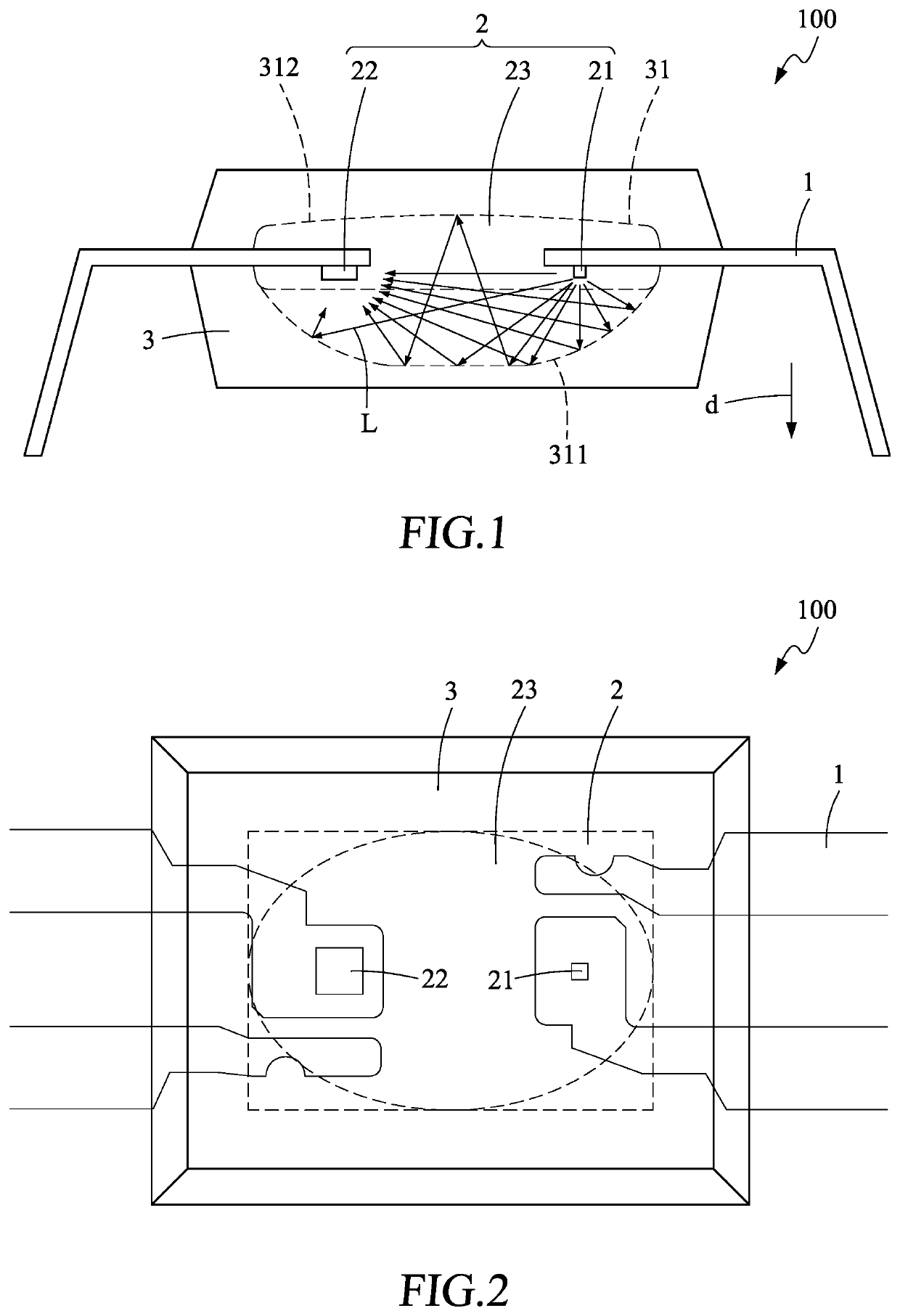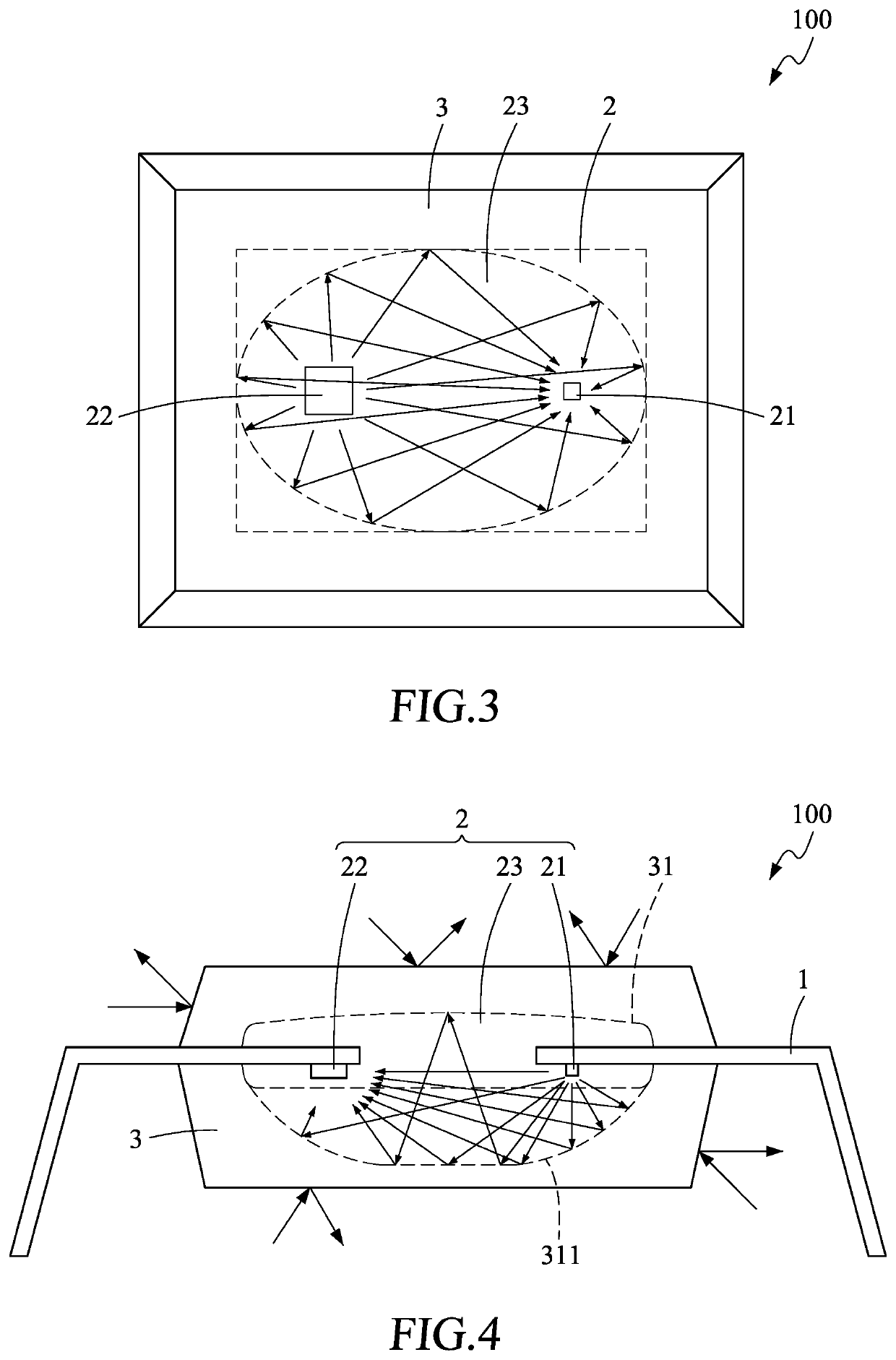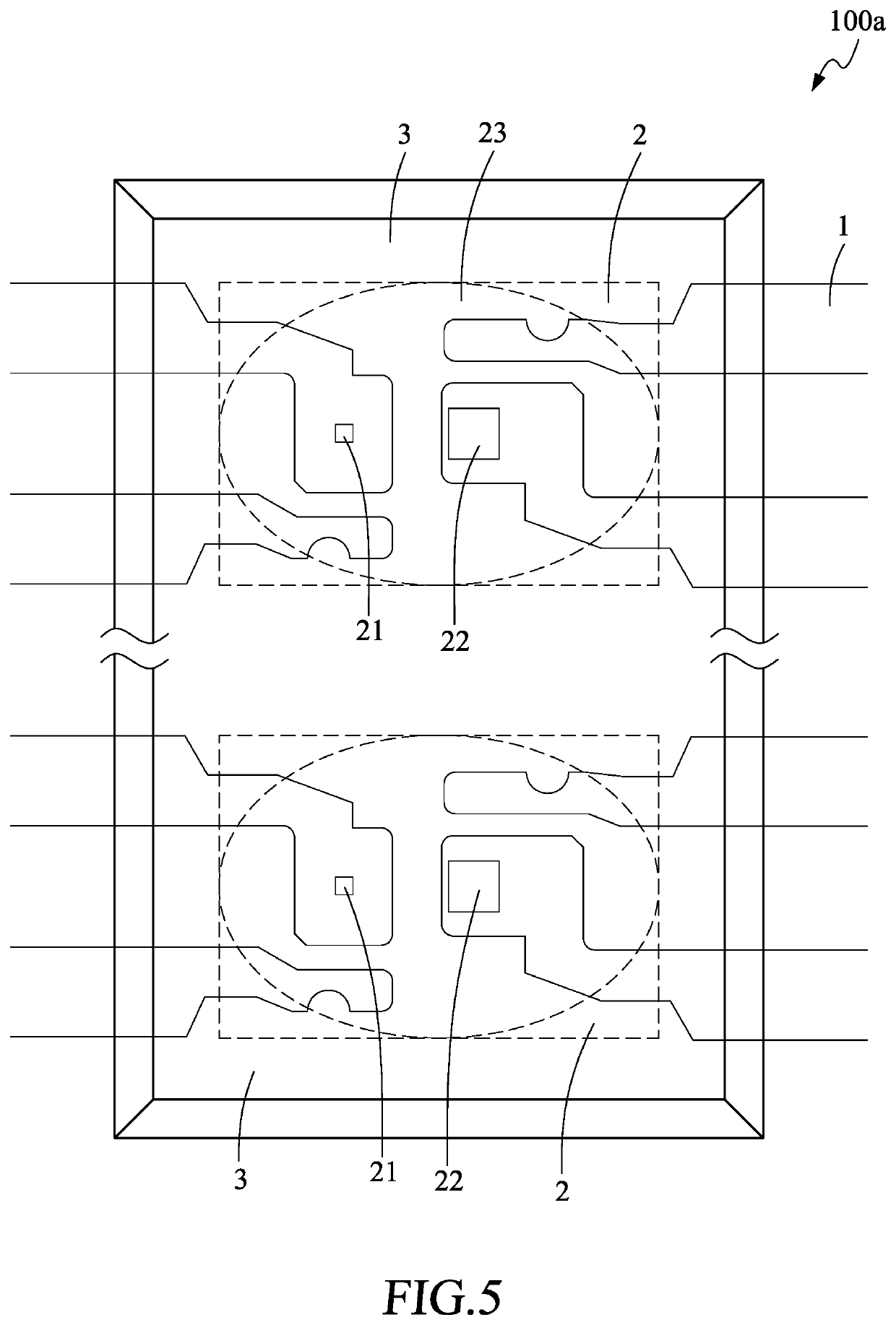Photocoupler
a photocoupler and photoelectric technology, applied in the field of electromechanical components, can solve the problems of not all products are capable of meeting the requirements of high voltage resistance, the production of thin-series photocouplers is either in poor production yield or with high defective products, and achieves easy forming, reduce parasitic capacitance of products, and improve common-mode interference immunity.
- Summary
- Abstract
- Description
- Claims
- Application Information
AI Technical Summary
Benefits of technology
Problems solved by technology
Method used
Image
Examples
Embodiment Construction
[0022]The preferred embodiments of the present invention are described in detail below with reference to FIG. 1 to FIG. 7. The description is used for explaining the embodiments of the present invention only, but not for limiting the scope of the claims.
[0023]As shown in FIG. 1 to FIG. 4, a photocoupler 100 according to one embodiment of the present invention comprises: two lead frames 1; an optical channel structure 2 including a light-emitting chip 21, a light-sensing chip 22 and a light-transmissive encapsulant body 23, the light-emitting chip 21 being mounted and bonded on one of the lead frames 1, the light-sensing chip 22 being mounted and bonded on the other lead frame 1 in such a manner that the light-sensing chip 22 is coplanar with the light-emitting chip 21, and a light-emitting surface of the light-emitting chip 21 and a light-receiving surface of the light-sensing chip 22 face toward the same direction, wherein the light-transmissive encapsulant body 23, enclosing the l...
PUM
| Property | Measurement | Unit |
|---|---|---|
| light transmittance | aaaaa | aaaaa |
| light reflectance | aaaaa | aaaaa |
| electrical | aaaaa | aaaaa |
Abstract
Description
Claims
Application Information
 Login to View More
Login to View More - R&D
- Intellectual Property
- Life Sciences
- Materials
- Tech Scout
- Unparalleled Data Quality
- Higher Quality Content
- 60% Fewer Hallucinations
Browse by: Latest US Patents, China's latest patents, Technical Efficacy Thesaurus, Application Domain, Technology Topic, Popular Technical Reports.
© 2025 PatSnap. All rights reserved.Legal|Privacy policy|Modern Slavery Act Transparency Statement|Sitemap|About US| Contact US: help@patsnap.com



